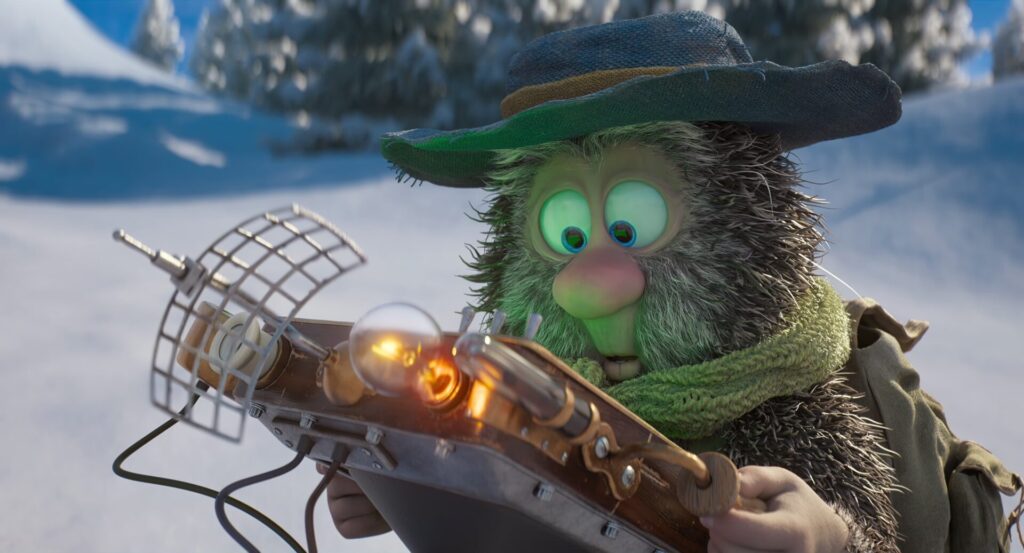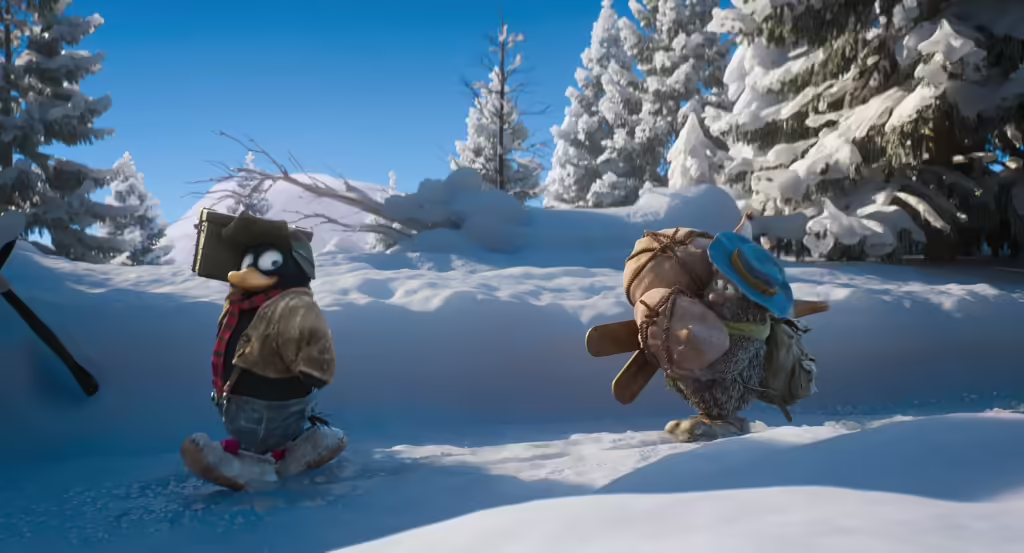
In the distant north of Oslo, Norway, two artists in their twenties embarked on a creative journey in 1994. Within the confines of a small, drafty attic, known as a ‘kvistloft,’ they established Qvisten, a studio dedicated to stop-motion animation.
Today, Qvisten produces two or three animated features every year, including their own originals, along with television and advertising work. While they have traditionally catered to a Scandinavian audience, the team is enthusiastically expanding their reach to captivate audiences beyond this region. A testament to Qvisten’s global outlook, about half of its 80-person team works remotely from locations worldwide.
In mid-2023, with an eye on the future, the studio saw a need to rebuild its pipeline to integrate Universal Scene Description (OpenUSD) with Autodesk Maya, Autodesk Arnold, and SideFX Houdini. The project began in September, and three months later, they were entering into production on their new pipeline.
“Seeing the investments and the substantial resources allocated to OpenUSD, it’s clear that this will become the awaited standard for 3D data. Autodesk realized this early on and has gained a good head start. OpenUSD brings numerous new concepts to the table and Maya makes it very familiar for the users to work with,” said Raymond Kreppene, Chief Technology Officer (CTO) at Qvisten. “While Maya exposes many of OpenUSD’s features to artists, there’s a lot that can be easily expanded upon and new tools that can be developed using the API.”

Addressing growth and future-proofing their studio
In the early days, Qvisten’s pipeline was simple with all asset work done in the same asset file, from modeling and rigging to grooming and look development. “This was efficient in a one-man-band workflow,” said Kreppene. “But, as the team grew it got challenging to schedule. Having several artists from different departments working in the same file could make a complete mess.”
Over time, they implemented a publish system and added features to address low-res and high-res versions, switching between asset variations to generate fur, hair, and other complexities. “After years of development,” said Kreppene, “it was a feature-rich pipeline made of cards. It needed to be rewritten.” That challenge was on Kreppene’s mind when he attended a Nordic TD forum in 2018, where a team from Pixar presented on OpenUSD, a framework they’d developed for exchanging and collaborating around 3D data.
“OpenUSD addressed all the things we were struggling with – variants, proxies, and all these things that we had integrated in our own way. It was done by Pixar, a huge studio, and structured and thought out so well.”

With companies like Autodesk, NVIDIA, Apple, and Pixar on board as the founding members of the Alliance for OpenUSD (AOUSD), an organization committed to fostering the standardization and growth of OpenUSD, it was easier for Qvisten to commit their pipeline to the ecosystem.
In OpenUSD, Kreppene saw a path that would enable them to adopt new software and techniques as they emerge and to future-proof Qvisten’s pipeline. The most important factor, though, was how it streamlined teamwork. “OpenUSD is all about connecting departments and artists and making changes reflect and update immediately across each department’s work files. It all comes down to making it easier for artists to make changes and see how their changes affect the final result,” he said.

Making OpenUSD artist-friendly with a “Smart-Ass” approach
Qvisten’s exploration into OpenUSD began in 2019, a time that marked a significant surge in the studio’s production volume. With the influx of projects, the studio initially managed to undertake a basic first pass at the implementation. By 2023, the studio assembled a cross-departmental team to optimally implement OpenUSD, aiming to leverage most of its features within just three months. Ensuring that the process was artist-friendly was their top priority.
“OpenUSD had all the answers, but the concepts and language were complicated, and we struggled to explain things in simple terms. We had to make the tools easy to use and understand.”
The task force spent a lot of energy figuring out how to structure the asset.usd, writing a simple template file called the “Smart-Ass,” to visualize and explain how it would work. “The goal for the ‘Smart-Ass’ is to produce a final asset that combines the work from all asset departments into one file, including all variants from different departments, proxy, and render purpose, classes, bounding boxes, and so on,” Kreppene explained.
While “Smart-Ass” is in its first version, the team is exploring OpenUSD to enable features like having several layers for each department and splitting modeling tasks between artists working on different parts of the asset. As they’ve begun work building their shot.usd pipeline, they’ve found the AOUSD forum as well as the USD Survival Guide and its main author Luca Scheller, useful resources.

Today, Qvisten’s animation pipeline starts with design and goes into modeling. Simple assets proceed to shading and texturing, while characters move to grooming, cloth simulation/draping, and more.
Once the rigs are published, the assets advance to animation, where the Qvisten team predominantly employs Autodesk Maya. “Maya is the industry standard for animation. That’s where you find the talent pool. It’s what people know and like,” added Kreppene.
Once the animation work is complete, final rendering is done in Autodesk Arnold. Qvisten has been an early adopter of Arnold, playing a pivotal role in its integration with Maya.“It delivers predictable results, and we have a great relationship with the developers,” he said. While the studio primarily renders in the cloud, they are looking into utilizing more GPU rendering as well as in-house rendering on their HP workstations.
When asked by other studios considering a move to OpenUSD whether the benefits outweigh the pipeline rebuild, Kreppene says, “OpenUSD can be beneficial for most team sizes, especially considering that it is quickly becoming a standard. This makes it easy to bring your work into different applications or to send your files to someone else. You can get significant benefits from using just a small subset of its features. However, when a project reaches a certain level of complexity, that’s when OpenUSD truly shines. It offers several ways to optimize large data sets and enables working in massive scenes very efficiently. It also allows artists to collaborate in smart ways. Part of moving to OpenUSD is also about being ready for what’s coming in the future.”

Explore how acclaimed animation studios harness the power of Autodesk Design and Make software to unleash limitless creativity, conquer complex workflow challenges, and automate tasks to scale production.